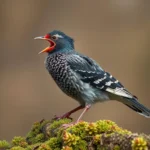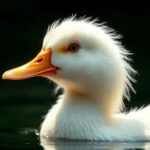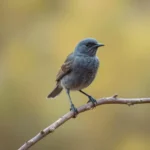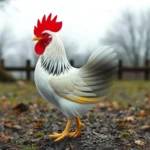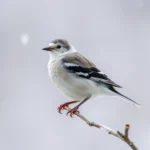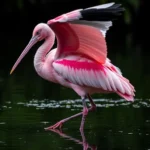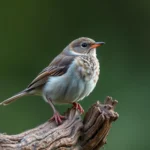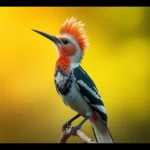The Brown-Headed Cowbird: Symbolism and Spiritual Insights
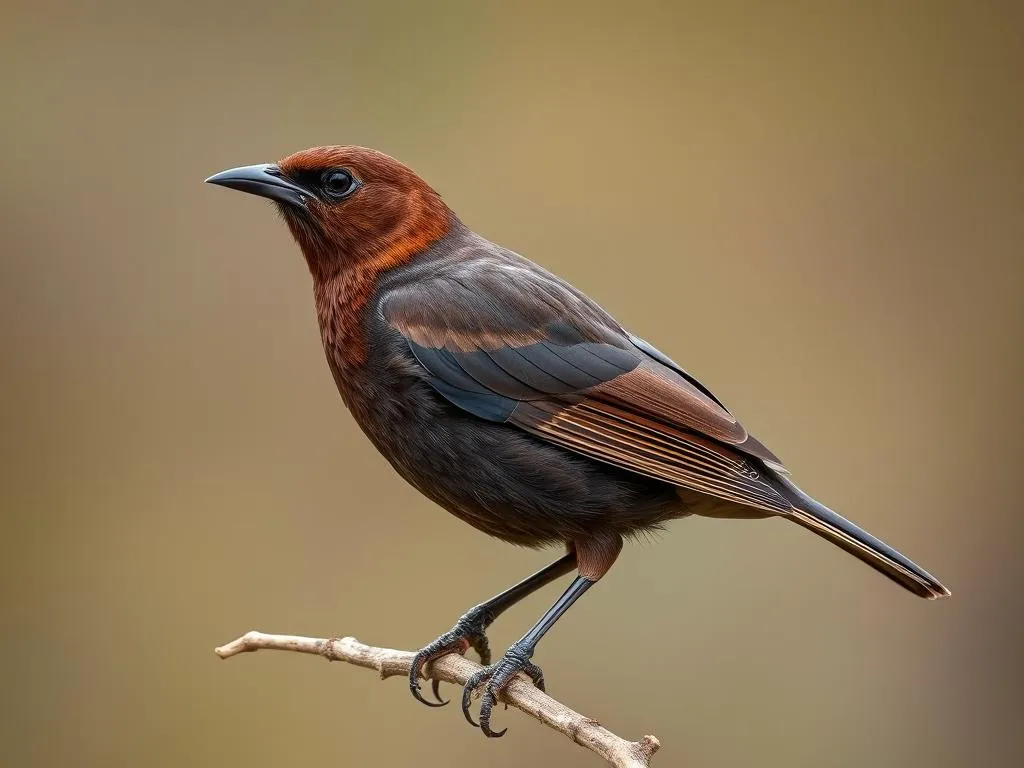
Disclaimer: Some images on this website are AI-generated artworks and may not accurately represent real animals.
The brown-headed cowbird is more than just a common sight in North America; it carries rich symbolism and spiritual meanings that resonate with many aspects of life. Understanding this bird’s characteristics, behaviors, and significance can provide profound insights into adaptability, community, and personal growth.
Understanding the Brown-Headed Cowbird
Physical Characteristics
The brown-headed cowbird is a fascinating avian species, easily identifiable by its unique appearance. Here’s a detailed look at its physical traits:
| Feature | Description |
|---|---|
| Size | Approximately 6-8 inches in length |
| Coloration | Males: glossy black body with a brown head |
| Females: more subdued brown with streaks | |
| Bill | Short, thick, and conical |
| Wings | Broad, often seen in flocks |
These birds are known for their striking appearance, particularly the male’s shiny black plumage contrasted with its rich brown head. The females, while less colorful, are equally intriguing with their subtle, streaked feathers.
Habitat and Distribution
Brown-headed cowbirds are primarily found across North America, from southern Canada to northern Mexico. They thrive in a variety of habitats, including:
- Open fields
- Grasslands
- Agricultural areas
- Forest edges
These adaptable birds are often seen in flocks, especially during migration. Their ability to thrive in diverse environments speaks to their resilience and adaptability, traits that are central to their symbolism.
Behavioral Traits
One of the most remarkable features of the brown-headed cowbird is its behavior of brood parasitism, where they lay their eggs in the nests of other bird species. This unique reproductive strategy has profound implications both ecologically and symbolically. Cowbirds rely on the parental care of other birds, often at the expense of the host species’ own offspring.
Socially, cowbirds are known for their flocking behavior. They often gather in large groups, not only for foraging but also for social interaction. This communal aspect plays a significant role in understanding their symbolism as well.
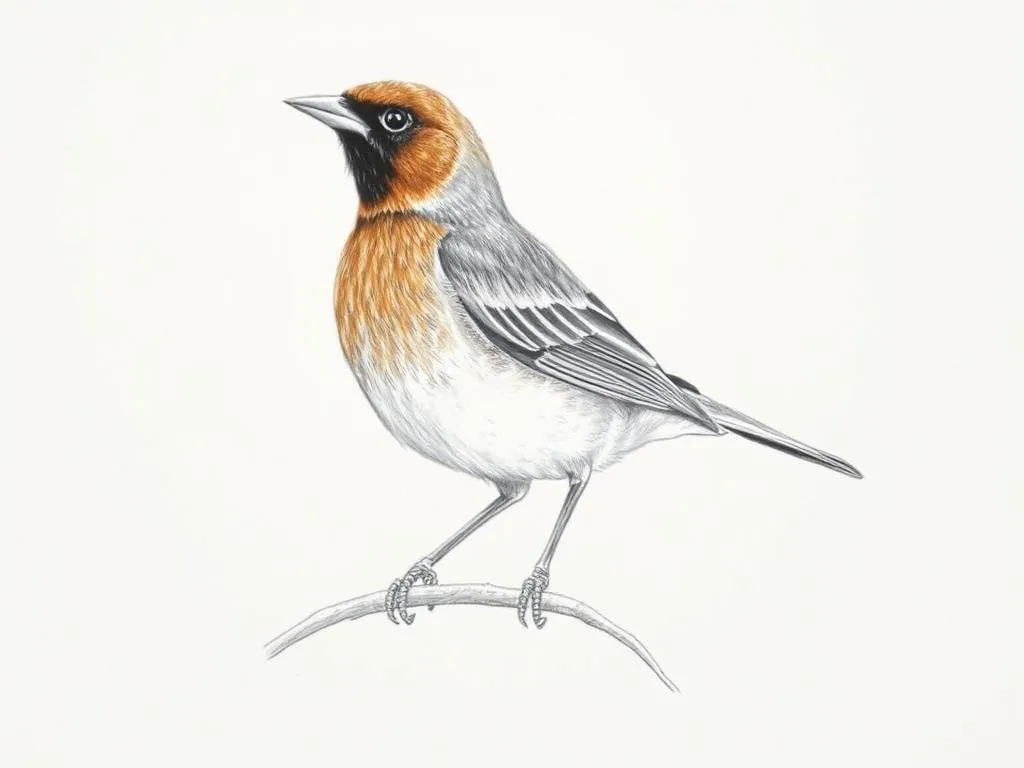
Symbolism & Spiritual Meaning
Adaptability and Survival
The brown-headed cowbird’s survival strategies highlight themes of adaptability. Their unique breeding behavior reflects a profound resilience in the face of environmental challenges. This adaptability can serve as a reminder to embrace change and find creative solutions in our own lives.
When we observe the cowbird, we are reminded of the beauty of flexibility. Just as they thrive in various habitats, we too can learn to navigate life’s challenges with grace and strength.
The Concept of Parasitism
Delving deeper into the brown-headed cowbird’s brood parasitism leads us to explore its implications in life. While this behavior may seem ruthless, it serves as a metaphor for the complexities of relationships and dependencies.
In life, we often find ourselves in situations where we rely on others, or conversely, when others rely on us. The cowbird’s act of laying eggs in another’s nest can symbolize the interdependence present in our communities. It prompts us to reflect on our own support systems and the dynamics of giving and receiving help.
Community and Social Structure
The brown-headed cowbird’s social behavior also offers rich symbolism. Their tendency to flock together signifies the importance of community and connection. In a world where isolation can often feel overwhelming, the cowbird reminds us of the value of companionship and collective strength.
Flocking together not only aids in survival but also creates a social structure that fosters interaction and support. This behavior encourages us to seek connections with others and to recognize the power of community in our personal journeys.
Brown-Headed Cowbird in Dreams
Interpretations of Cowbirds in Dreams
Dreaming of the brown-headed cowbird can invoke various themes and messages. Here are some common interpretations:
| Dream Theme | Possible Meaning |
|---|---|
| Presence of Cowbirds | Indication of adaptability in waking life |
| Flocking Behavior | Need for community and social connections |
| Brood Parasitism | Reflection on dependency and interdependence |
| Striking Appearance | Awakening to one’s own unique traits or abilities |
When a cowbird appears in dreams, it often signifies a call to embrace change or to assess your relationships. The presence of these birds can encourage introspection about how you connect with others and adapt to life’s challenges.
Connections to Personal Growth
Cowbirds in dreams may also symbolize personal transformation. Their unique traits can serve as a reminder of the importance of embracing one’s individuality while navigating social dynamics.
For those who find themselves dreaming of cowbirds, it is an invitation to reflect on personal growth. Are there areas in your life where you need to adapt? Or perhaps aspects of your social circle that require reevaluation?
Messages from the Spirit World
In many cultures, birds are seen as messengers from the spirit world. The brown-headed cowbird is no exception. Dreaming of this bird may carry spiritual significance, indicating that messages from higher realms are trying to reach you.
Such dreams can signal a need to pay attention to your intuition and the signs around you. The cowbird may urge you to listen closely to your inner voice and to be open to receiving guidance from the universe.
Modern Interpretations
Cultural Symbolism
Throughout history, the brown-headed cowbird has held various meanings in different cultures. In Native American traditions, these birds are often seen as symbols of adaptability and survival, embodying the spirit of resilience in challenging environments.
In some folklore, cowbirds are viewed with suspicion due to their brood parasitism. This duality of perception underscores the complexities of their symbolism, reminding us that different perspectives can shape our understanding of nature.
Environmental Concerns
In recent years, the brown-headed cowbird has also come under scrutiny due to its impact on other bird species. Conservation issues surrounding their brood parasitism have raised questions about ecological balance and the consequences of human intervention in natural habitats.
These discussions highlight the need for a nuanced understanding of the cowbird’s role within ecosystems. The ongoing environmental challenges prompt us to consider how our actions affect the delicate balance of nature and the creatures that inhabit it.
Influence on Popular Culture
The brown-headed cowbird has made appearances in literature and art, often representing themes of adaptability and social complexity. These portrayals can inspire us to explore our own connections to the natural world and the deeper meanings behind our interactions with it.
From poems that celebrate the beauty of birds to illustrations in children’s books, cowbirds serve as symbols that resonate with audiences, encouraging reflection on the intricate web of life.
Key Takeaways
As we explore the brown-headed cowbird, several core themes emerge:
- Adaptability: A symbol of resilience in changing environments.
- Interdependence: Reflection of complex social dynamics and the importance of community.
- Personal Growth: A reminder to embrace transformation and individuality.
- Spiritual Messages: Insights into intuition and guidance from the spirit world.
- Ecological Awareness: Encouragement to consider the impact of our actions on nature.
These themes invite us to reflect on how the symbolism of the brown-headed cowbird relates to our own lives.
Conclusion
The brown-headed cowbird stands as a profound symbol of adaptability, community, and the complexities of life. Its unique behaviors and social structures offer valuable insights that resonate with our personal journeys.
As we observe these birds in nature, let us consider the deeper meanings they embody and how their symbolism may reflect our own experiences. The cowbird encourages us to embrace change, seek connection, and navigate the intricate dynamics of our lives with grace and resilience.
